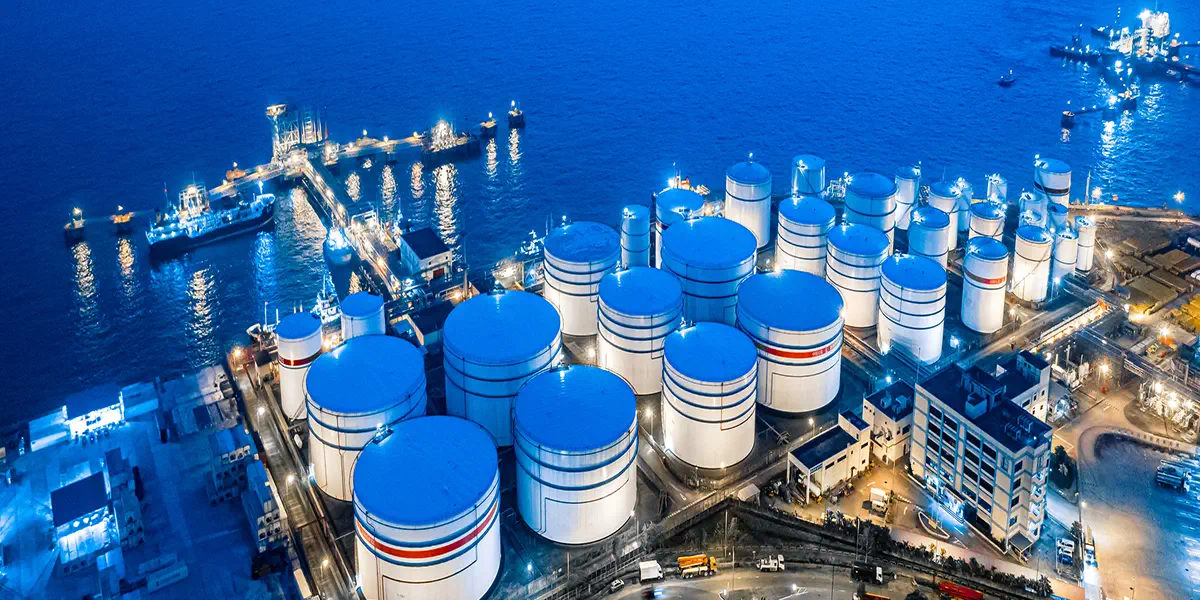We had the opportunity to sit down with Rystad Energy CEO, Jarand Rystad, as well as industry leaders from our Energy Components team, Magnus Ulseth and Willem-Wouter Rutgers, for a discussion about optimizing LNG Import Terminals in Europe. This panel had a special focus on understanding current trends of the EU LNG Import terminal industry and shared their best practices on securing import terminal operations.
High-Level Trends in the LNG Import Terminal/FSRU Space Specific to Europe
Natural gas is a major part of the EU energy mix at 24%, however 80% of this is imported from outside EU.
Prior to the Russian-Ukrainian conflict, Europe relied on Russia for approximately 45% of their import of natural gas. However, given that this is no longer a sustainable means of receiving natural gas due to political decisions triggered by this conflict, LNG may be the key replacement for the natural gas that’s needed.
The EU as a whole has more than 30 LNG import terminals. However, one of the primary issues Europe faces with LNG is that a majority of the spare capacity of these terminals are located in Spain, which do not have pipeline capacity to transport natural gas to other areas in Europe. What is apparent, is that there are bottlenecks to replacing Russian natural gas with LNG.
Jarand Rystad agrees that replacing natural gas with LNG is going to be a painful uphill battle, but also points out a silver lining. He believes Europe has the opportunity to stop reliance on Russian gas by 2030 due to the energy transition making Europe less reliant on natural gas as a whole.
Keys to Fulfilling the LNG Demand in Europe while Operating at Maximum Efficacy
While Europe is going to need time to make this sort of transition in terms of their terminal and pipeline infrastructure, there are other areas such as commercial usage of energy that can replace gas in a shorter amount of time. For instance, solar and wind are expected to reduce commercial usage of gas as they transition to using cleaner energy sources.
Rystad believes that as Russian gas dependency is reduced, an increased dependence on Norwegian piped gas will fill in the void for the short term while LNG begins to replace pipeline gas import. However, one of the great bottlenecks is that the country which is in need of LNG the most, Germany, has no LNG import terminals which poses quite a challenge. This is where floating storage and regasification units (FSRUs) can help. Only since the Russian-Ukrainian conflict started there are more than 12 new regasification projects proposed across Europe with 6 new terminals proposed in Germany alone.
Leveraging Decision-Ready Data and Digitalization to Optimize Performance with a Focus on Energy Transition
Energy Components is a fully integrated contract-to-cash solution that manages all business processes related to LNG imports, covering all parts of the LNG value chain. With the need to replace natural gas with LNG becoming an issue of urgency, solution sets need to keep up with the pace and this is where having solutions that offer decision-ready data to optimize performance comes in very handy.
While onshore LNG import terminals typically can take 5 years from the financial planning stage to commissioning, hurried FSRU projects can now take as little as 6 months. This is good news for Europe as they move towards two goals: becoming more reliant on clean energy in the long-term, and less dependent on Russian gas in the short-term.
To find out more, watch the full discussion and learn more about Energy Components.

 Previous Page
Previous Page